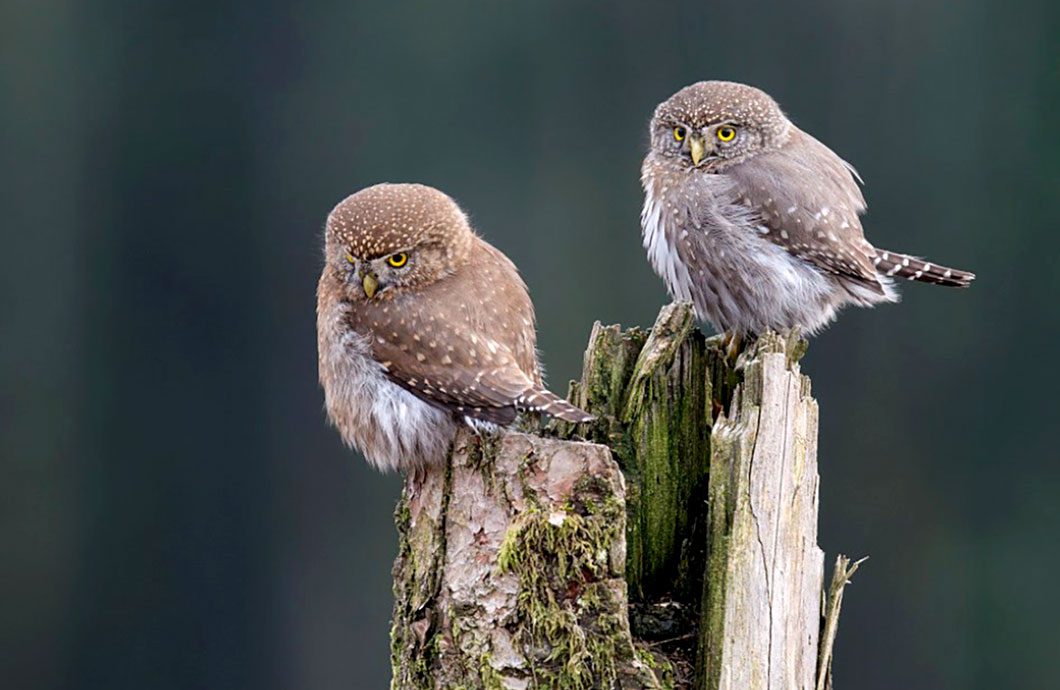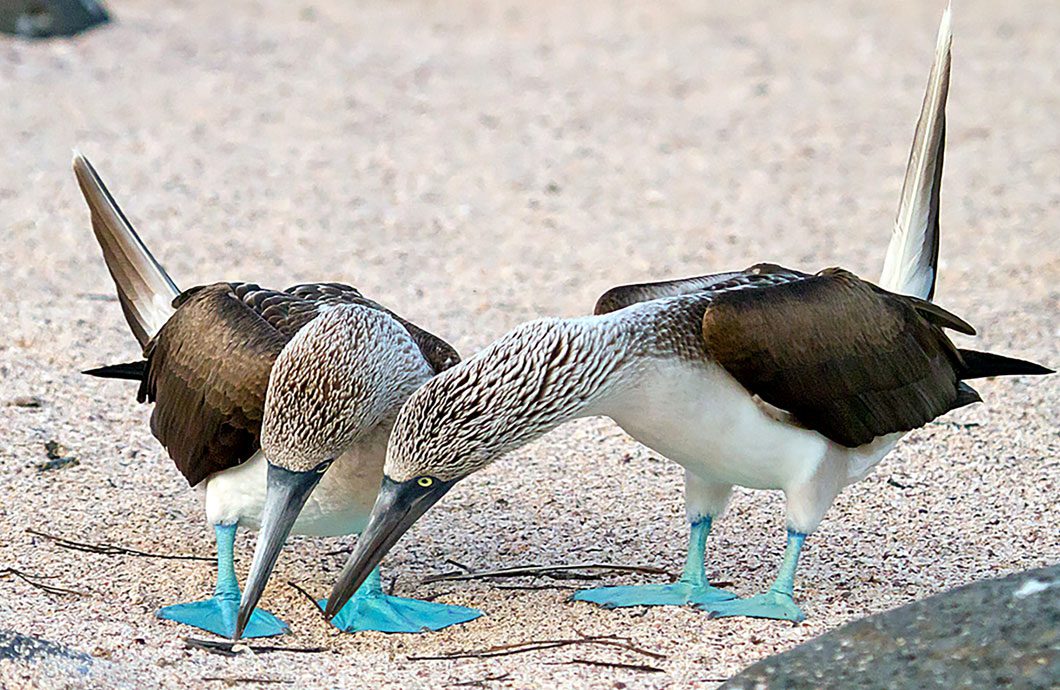Happy Valentine’s Day: A Birdshare Gallery
February 13, 2017
This courting pair of Red-necked Grebes makes a heart shape against the water. Photo by Gregory Lis via Birdshare. 
A handsome pair of Baltimore Orioles perches in a flowering tree. Photo by Mike via Birdshare. 
Mourning Doves often preen each other and give gentle nibbles around the neck as part of a pair-bonding ritual.
Photo by Lou Orr via Birdshare.
Barred Owls are some of the noisiest when it comes to courting, often calling "Who cooks for you?" in echoing evening duets. Photo by Rob and Amy Lavoie via Birdshare. 
After spending most of the year on their own above the waves, this pair of Black-footed Albatrosses reconnect with a little quiet time on land. Photo by weedmandan via Birdshare. 
Two Northern Pygmy-Owls share a perch in British Columbia. Photo by Gregory Lis via Birdshare. 
A Black Tern brings its mate a fish as a courtship gift. Courtship feeding is a common bonding ritual in many species. Photo by Gary Fairhead via Birdshare. 
A pair of Least Terns strike a noble pose on a New Jersey beach. It's hard to believe these birds weigh just an ounce and a half each. Photo by B.N. Singh via Birdshare. 
These are the two Red-tailed Hawks whose nests we have live-streamed since 2012. Here, in one of the cam's best-known moments, the male, Ezra, shelters his mate, Big Red, as their eggs hatch on a cold rainy day. 
For several years a pair of Great Blue Herons nested outside the Cornell Lab's offices. Here's a shot of the pair displaying to each other from the nest site on a dead tree high above the pond. 
Like many other waterfowl, Ring-necked Ducks give clear displays when they're courting, including dipping their bills in the water or stretching their necks. Photo by Mike Dec via Birdshare. 
Not all birds are aptly named, but Blue-footed Boobies certainly are. They show off their brilliant blue feet as part of courtship. Photo by Lois Manowitz via Birdshare. 
A Wood Duck couple bond in British Columbia. Photo by Gregory Lis via Birdshare. 
A handsome Gambel's Quail pair in New Mexico. Most Gambel's Quail pairs raise young together, but every once in a while the female lays a clutch of eggs, then finds another mate and leaves her original mate to raise the first clutch on his own. Photo by Elroy Limmer/GBBC. 
Males and females of some species look similar, but subtle clues such as relative sizes and differences in behavior can help. In Razorbills, females are around 5% smaller than males, with slightly thinner bills. Photo by Joshua Clark via Birdshare. 
Female Red-headed Woodpeckers have colors just as eye-poppingly brilliant as their male counterparts. Photo by Earl Reinink via Birdshare. 
You might call it nuzzling; a behavioral scientist would call it "allopreening." Here, one King Penguin helps another preen a hard-to-reach spot. Photo by Harold Moses via Birdshare. 
A pair of Tufted Titmice check out a possible nest site together. Photo by Fernando Corrada via Birdshare.
Birds inspire a lot of emotions—awe at their numbers, wonder at their brilliant colors, envy of their flight, delight in their song, concern for their future, and love, for the way many of them form long-lasting pair bonds and care for their young. Science is still undecided on the existence of complex emotions in birds—nevertheless, for Valentine’s Day, we offer a slideshow of birds showing a little of what we perceive as tenderness. Thanks to the many Birdshare photographers whose work is represented here.

All About Birds
is a free resource
Available for everyone,
funded by donors like you
American Kestrel by Blair Dudeck / Macaulay Library


















